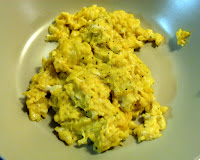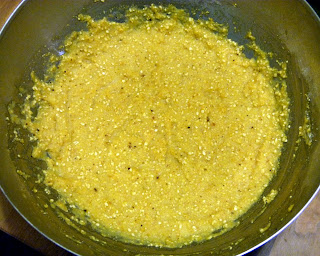During my time in Shanghai in the summer of 2009, I encountered many interesting foods. Tomato and egg quickly became a staple of our diets. You could buy a bowl of rice and a plate of tomato and egg for next to nothing. Although very common in China, the dish is relatively rare in American Chinese restaurants, although Carnegie Mellon's esteemed eatery Asiana, to their credit, does serve it. As I note below, juicier tomatoes make this even better, as the juice naturally forms the sauce. This dish marries perfectly with white rice, as the juice integrates nicely. For me, the perfect accompaniment to this nostalgia-laced dish would be a bottle of Tsingtao.
Ingredients
- 4 large eggs
- 2 tomatoes (the juicier the better)
- 1/4 medium sweet onion
- 1 clove garlic
- 1/4 tsp sesame oil
- 1/2 tsp sugar
- Salt and pepper
- Vegetable oil
Instructions
As with making fried rice, we'll do the eggs first. In a bowl, beat eggs and add sesame oil, salt, and pepper. Heat a little oil in a wok and cook the eggs until the liquid is gone, but they are still soft. As always, avoid overcooking scrambled eggs. Set aside.
Clean the stuck egg bits out of the wok, and add more oil. Slice the onion into strips. Cook on medium-high heat until softened. Once the onions go in, mince the garlic and add to the wok. While this cooks, cut the tomatoes into wedges. I cut 12 wedges out of each one. Once the onions are nice and soft, add the tomato wedges. Cook covered until the tomatoes are heated through. Add sugar and eggs. Mix well, and cook together briefly. Serve with rice.








































